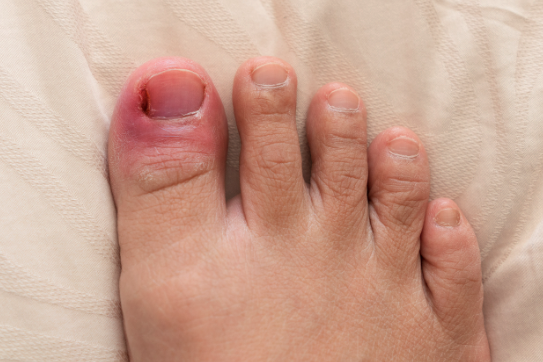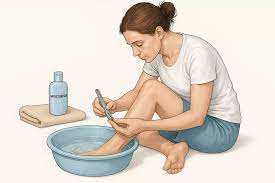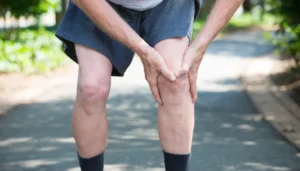An ingrown toenail may seem minor at first, but if left untreated, it can lead to pain, swelling, and even infection. Early care can prevent complications and keep the problem from worsening. Simple measures can make a significant difference in easing discomfort and supporting healing. Here’s how to treat an ingrown toenail before it becomes a problem:
Recognizing the Early Signs
Early detection allows for more effective home treatment. An ingrown toenail develops gradually, making it possible to catch the problem before it worsens. The first signs include mild tenderness around the nail edge and slight redness. The affected area may feel warm to the touch, and you may notice swelling along the side of your toenail. Pain often intensifies when wearing shoes or walking, as the pressure from footwear exacerbates the condition.
Advanced symptoms indicate the need for immediate attention. These include severe pain, significant swelling, and drainage of pus from the affected area. If you notice red streaks extending from the toe or experience fever, seek medical care immediately, as these signs suggest a spreading infection.
At-home Treatments To Relieve Discomfort
Several home remedies can help relieve mild ingrown toenails. These methods are most effective when initiated early, before the infection develops. Warm water soaks provide basic and effective treatment. Soak your foot in warm, soapy water for some minutes daily. This softens the nail and surrounding skin, reducing inflammation and promoting healing. After soaking, gently dry the area and apply a thin layer of antibiotic ointment.
Proper footwear changes support healing. Wear shoes with plenty of toe room and avoid tight-fitting footwear that puts pressure on the affected nail. Open-toed shoes or sandals are best suited for use during treatment. If you must wear closed shoes, choose ones with a wide toe box and soft materials.
Preventing Ingrown Toenails
Prevention strategies are more effective than treatment after problems develop. Simple changes to nail care routines and footwear choices can significantly reduce your risk. Proper nail trimming technique is fundamental. Cut toenails straight across rather than curved, and avoid cutting them too short. The nail should extend slightly beyond the tip of your toe. Use clean, sharp nail clippers and file rough edges smooth to prevent snagging.
Footwear selection plays a key role in prevention. Choose shoes that fit properly with adequate toe room. Your longest toe should have about a thumb’s width of space from the front of the shoe. Avoid high heels and pointed-toe shoes that crowd the toes. Replace worn-out shoes that no longer provide proper support or fit. Foot hygiene supports overall nail health. Keep feet clean and dry, changing socks daily and choosing breathable materials.
Knowing When To See a Doctor
Professional medical care becomes necessary when home treatments fail or complications arise. Certain conditions also increase the risk of serious complications from ingrown toenails. Seek immediate medical attention if you notice signs of infection. These include pus drainage, red streaks extending from the toe, fever, or worsening pain despite home treatment.
Underlying health conditions require professional evaluation. Individuals with diabetes, poor circulation, or nerve damage in their feet should consult a healthcare provider promptly for any ingrown nail. These conditions increase the risk of serious infections and slow healing.
Professional treatment options include partial nail removal, splinting techniques, and antibiotic therapy. A podiatrist can safely remove the ingrown portion while preserving healthy nail tissue. This procedure is performed in the office with local anesthesia.
Schedule Your Ingrown Toenail Evaluation Today
Early treatment of ingrown toenails prevents complications and reduces discomfort. Home remedies are effective for mild cases, but professional care is necessary when infections develop or underlying health conditions are present. Contact a podiatrist today to schedule a professional evaluation for your ingrown toenail.














